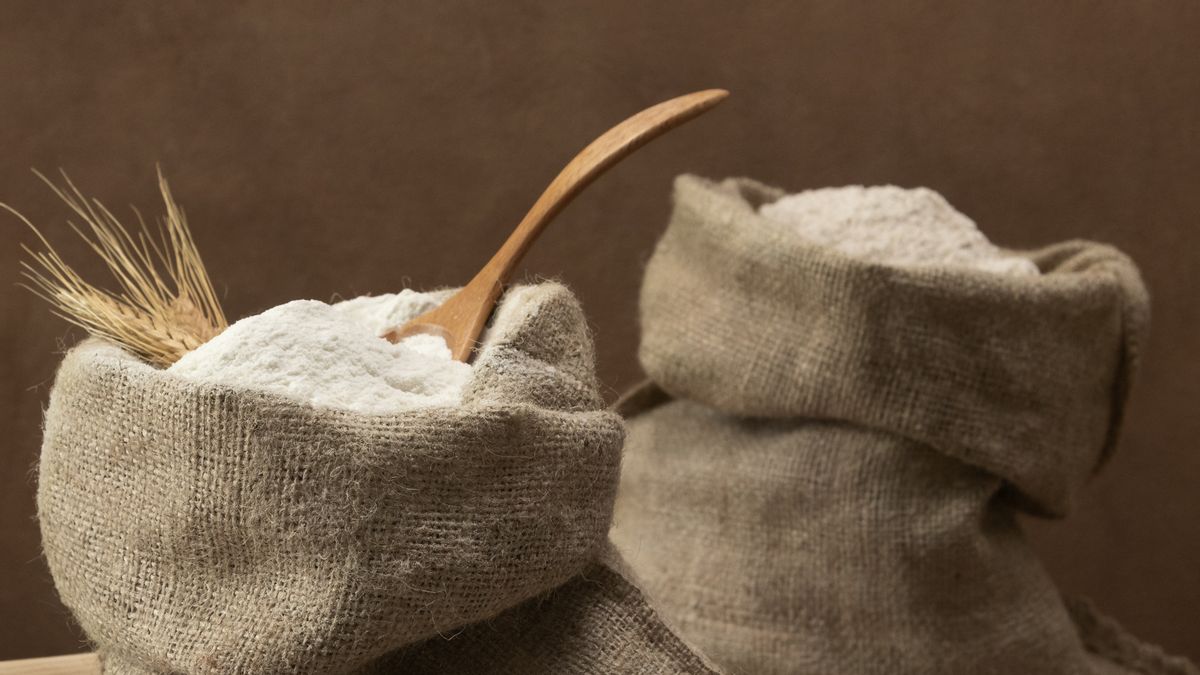YOGYAKARTA - Most of the beginners still like to be confused by sago flour and tapoka flour, many think it's the same, even though it's different. Therefore, this time we will discuss different sago and tapioka flour here. Listen until it's finished, yes!
Although both of them came frompati sources, namely tubers, there was a significant difference between the two.
Can you distinguish sago and tapioka flour from just seeing or holding it? If you don't know what the difference between the two is, follow the following discussion, come on!
I. Function
Sago Flour and tapioka have almost the same role in cooking, which is to give a sticky, chewy and elastic texture when lifted on a wet dough. On the other hand, make a dough such as making a pasty cake, both of which have the function of providing a hard texture, but are persistent and soft in the mouth. Tapioka Flour is also often a utilizing ingredient for cooked food or needs thick sauce.
II. Use
In making food, sago flour may be used more commonly to make papeda, limestone, pearls, pempek, meatballs, sago cakes,amayang scarves and others. On the other hand, tapioka is used to make cilok, cireng, cimol, meatballs, rounds, and crackers. Sago or tapioka flour can also be processed into simptious pastries. But usually for various wet cakes, tapoka flour is more often used.
III. Availability in the Market
Usually tapoka flour is easier to find and found in small markets or shops in rural areas because the distribution is more abundant in various regions, especially in Java. For some areas such as Maluku and Papua, it could be that sago flour tends to be easily found, such as tapoka flour.
IV. Basic Materials
Sago flour is made from sago trees, on the other hand tapoka flour is made from cassava. Sago flour is made from sago stem cap deposits that have previously been smoothed and mixed with water. When the deposit is taken and dried or dried, it becomes sago flour. On the other hand, tapoka flour is the result of drying the cassava star.
V. Texture and Color
Judging from the appearance of sago and tapioka flour, it can be equally white, but tapoka flour has a clean white color while sago flour seems to be more cloudy or yellowish. Consistently, sago flour tends to dry and sweat when held by the hands otherwise tapoka flour has a dry and slippery texture. One thing that makes sago or tapioka flour the same is the same type which is both gluten-free (gluten free) because it is a type ofpati flour.
That's the difference between sago flour and tapoka flour. So don't get me wrong if the two of them are the same flour!
Replacement Of Sagu And Tapioka Flours
1. Flour Garut
Garut is not just a city name, Loh!. Garut is a substitute for sago flour and good tapioka when used as a utilizing material or a combination of cakes.
Garut is a gluten-free tuber made from Maranta arundinacea plants. Launching from the Journal of Food Science and Technology, garrut flour is very similar to tapoka flour and can be replaced with a ratio of 1: 1 for most dishes.
2. Rice Flour
Rice flour is a gluten-free alternative that can be an option for sago and tapioka flour. This flour is made from fine ground grains of rice and has a very light taste and does not interfere with the final taste.
Rice flour is generally more sticky and has stronger congestion than tapioka flour. Therefore, its use needs to be adjusted, meaning reduced from the proper prescription.
3. Corn Flour
Corn Flour is a substitute for tapoka or sago flour that is easy to obtain. Generally, corn flour is also known under the name Maizena flour. Corn flour is also gluten-free which makes it very suitable for cooking. However, corn flour is generally thicker than tapioca flour.
SEE ALSO:
4. Flour of potatoes
The potato flour is also gluten-free and can take over sago and tapioka flour. However, consistency tends to be heavier and can produce denser foods, depending on what you cook.
5. Multipurpose Flour
Multipurpose flour can replace sago flour and tapioka with a ratio of 1:1 in most recipes. The texture is indeed quite different depending on why you are wearing it?
The final result of tapoka flour was bright and shiny when used as a thickener for sauce or soup.
In addition, you also need to read about: Tepung Without Gluten for Diet and Your Health.
So after knowing the different flour of sago and tapioka, see other interesting news on VOI.ID, it's time to revolutionize news!
The English, Chinese, Japanese, Arabic, and French versions are automatically generated by the AI. So there may still be inaccuracies in translating, please always see Indonesian as our main language. (system supported by DigitalSiber.id)













